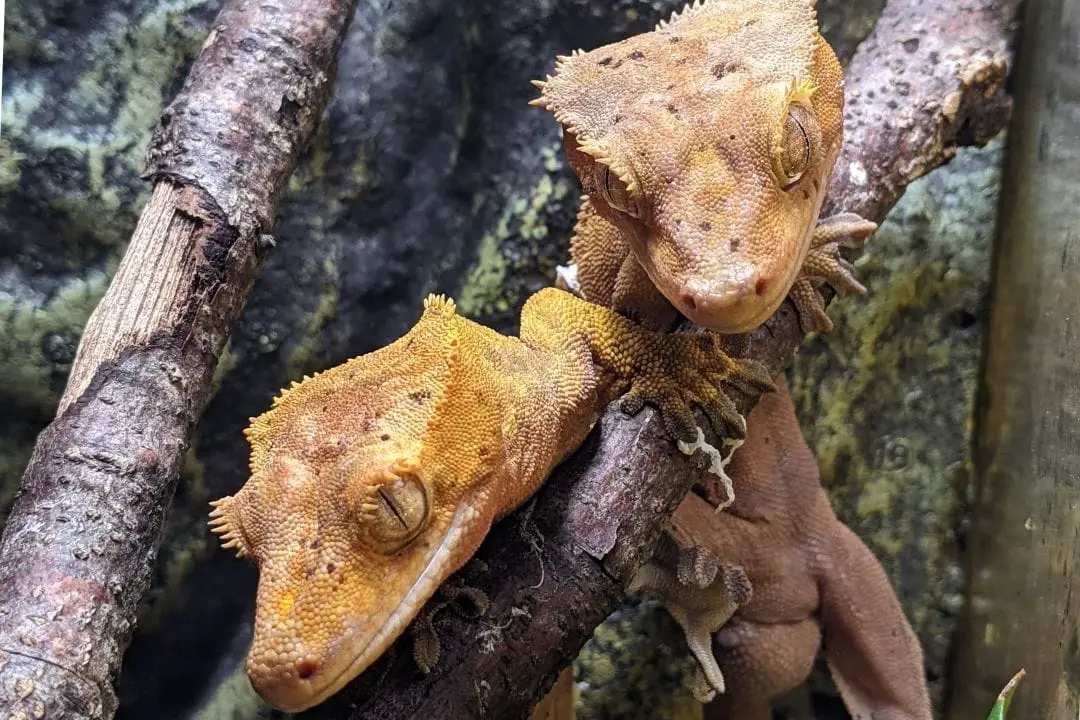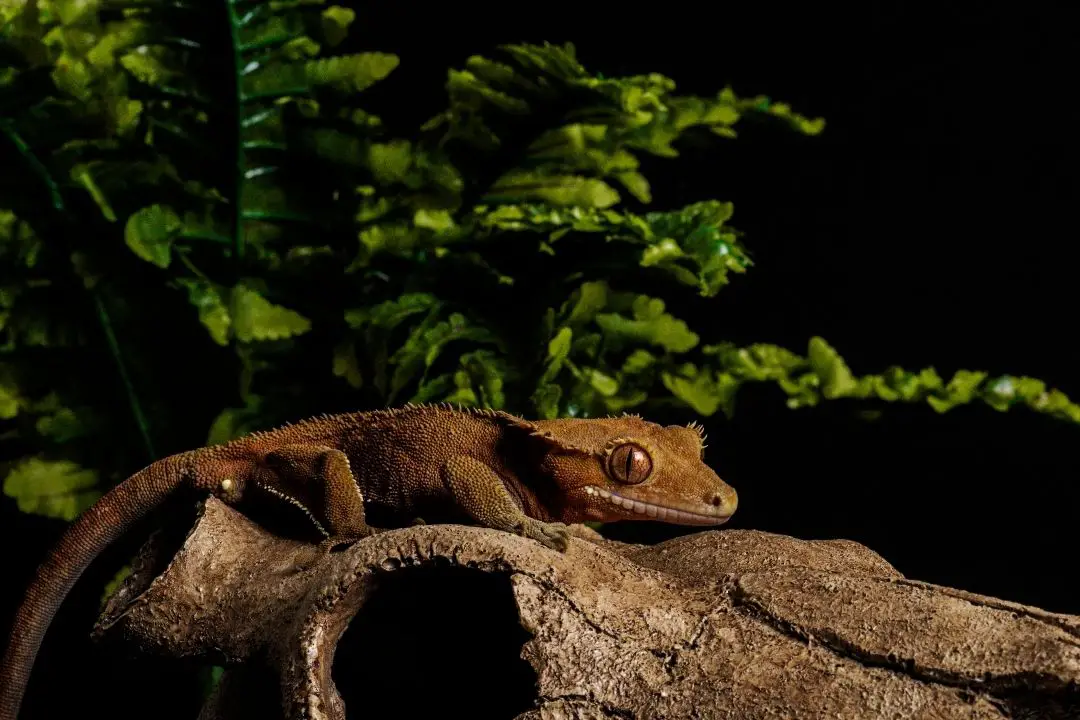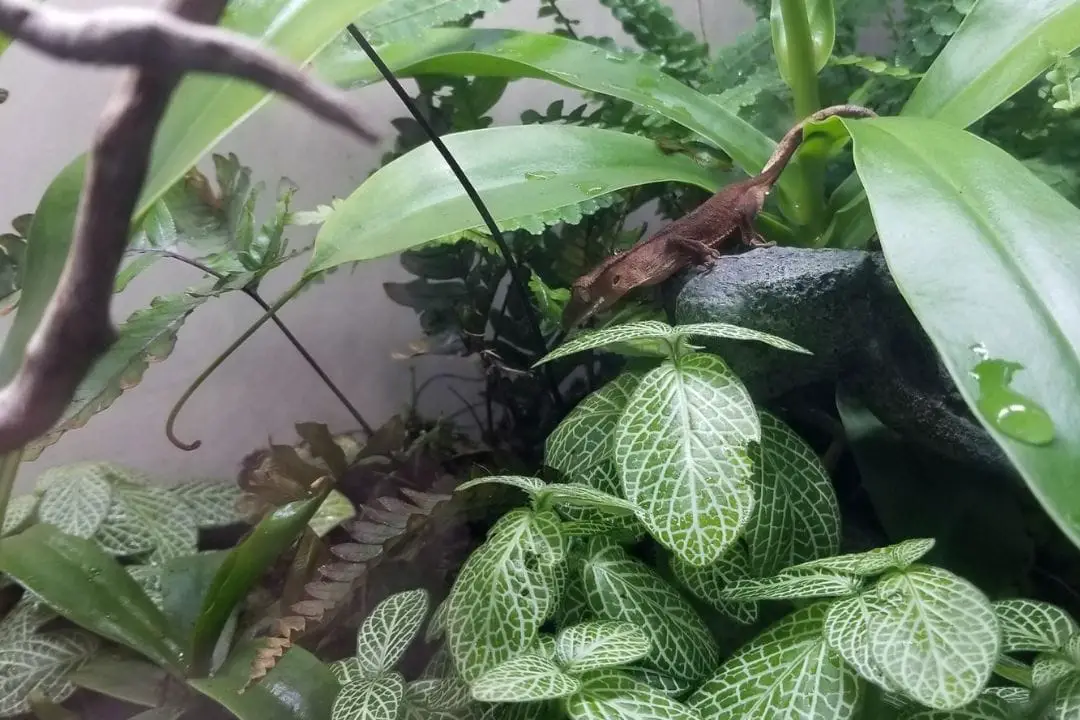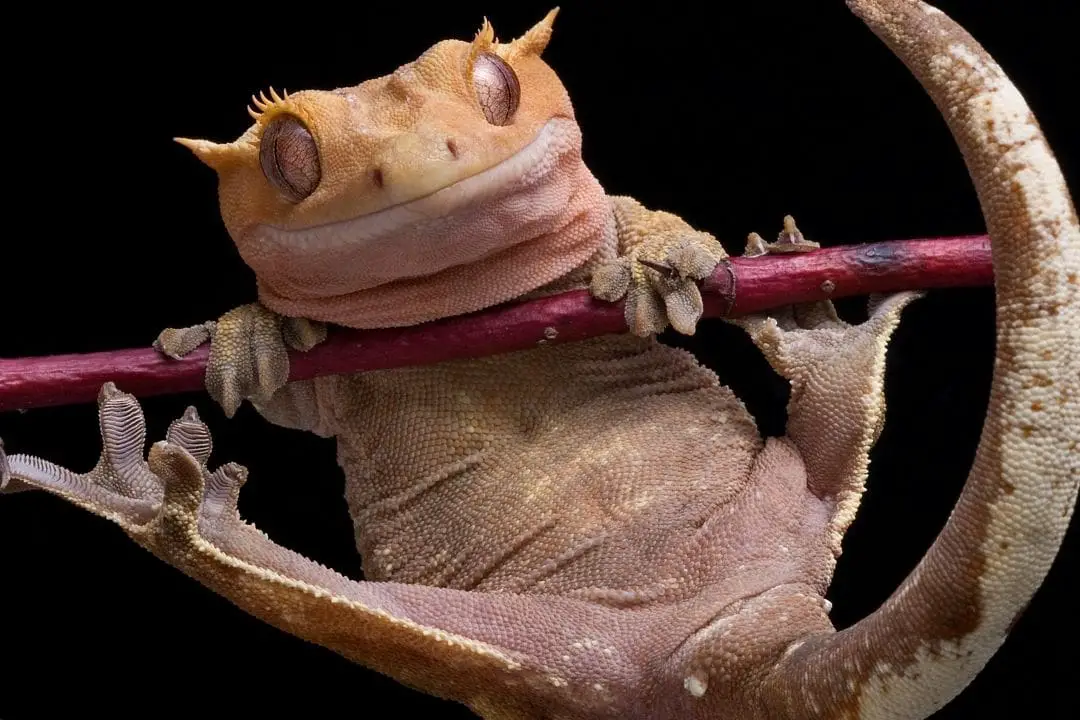Crested geckos (Correlophus ciliatus) are a popular gecko native to New Caledonia.
These geckos are not sexually dimorphic and can be hard to sex.
While you don’t need to know for a single pet, if you want to breed or house multiple geckos, you need to know what sex they are.
Males can’t be housed together because they will fight and even kill each other. There are no obvious signs of the animal’s sex until it grows for quite some time. Here are a few methods to sex your geckos.
What You Need
Determining a gecko’s sex is pretty easy in an adult. If your gecko is comfortable with being handled, you can easily check for the bulge with the gecko in your hands.
If you are using other methods, you will need some equipment. If your gecko is young, it may try to jump away while you handle it.
Young crested geckos are not always great at judging distances, so your gecko may be hurt if it jumps.
Using a clear bowl or container to look at the underside of the animal may help keep it safer. You will also want a helper to hold the gecko still without hurting it.
You will also need some way to magnify the area to make it easier to see any pores above the vent.
For a young crested gecko, a clear holding enclosure works well and will make sure your gecko can’t escape or hurt itself while you check.
How Old Does My Crested Gecko Need to Be?
The most reliable time to tell is after your gecko reaches about 18 grams or so. This can be around 9 months old, but some geckos may take longer to reach this size.
Crested geckos reach sexual maturity based on size rather than based on weight.
This means that it can take more time for a gecko that hatched late in the year versus one that was hatched right before the warmer months. Many breeders have noted that crested geckos grow faster during the spring, summer, and fall.
This can vary depending on your area. Most geckos can take up to 2 years to reach full breeding size. You shouldn’t really house crested geckos together until they are old enough to breed.
Even if you only want to house females together, the geckos should all be fully grown and around the same size to help reduce conflict.
You may be able to have an idea with the pore method as early as 6 months of age.
At this point, your gecko should be large enough that you will be able to tell if your gecko has pores above the cloaca. Some breeders can tell as soon as 4 months old and around 5 grams of weight.
This can take practice and seeing plenty of crested geckos to learn.
1. Look for the Bulge
The single biggest tell in an adult gecko is a bulge under the tail:
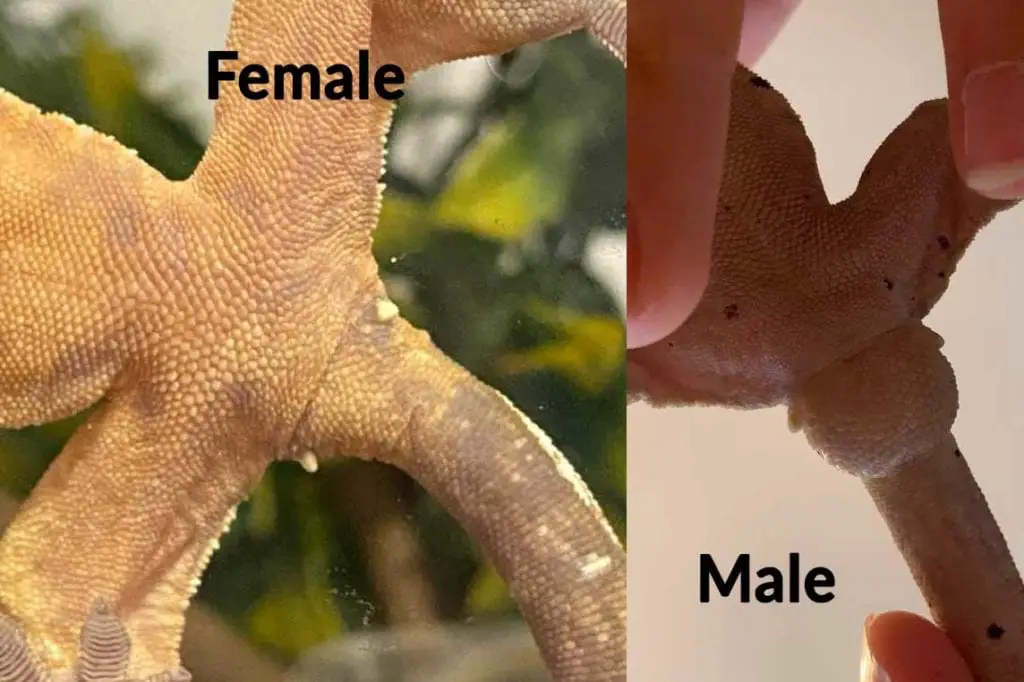
An adult male has a bulge located under the tail near the vent.
This is where the gecko’s hemipenes are located.

This is very obvious and easy to see even from the back of the animal. If you are not sure whether your gecko has a bulge, it is either too young or a female.
This bulge is easily visible around 18-25 grams of weight and will be obvious by 30 grams.
All you need to do is pick up your gecko and gently flip it onto its back and move the tail away. So long as your gecko is a full-grown adult, it will be very easy to tell.
Females tend to have a flat spot under the tail.
If your gecko has lost its tail, you should still be able to tell by looking for an area that extends further out than the tail nub.
If your gecko doesn’t tolerate being placed on its back, you can put your gecko in a clear-bottomed container like a glass bowl and hold it above you to check.
A clear piece of plastic or glass can also work if you are sure your gecko won’t try to jump off and hurt itself.
Some of the enclosures you can buy for holding your gecko for vet visits or enclosure cleaning are also clear enough to be used for this.
2. Look for the Preanal Pores in Males
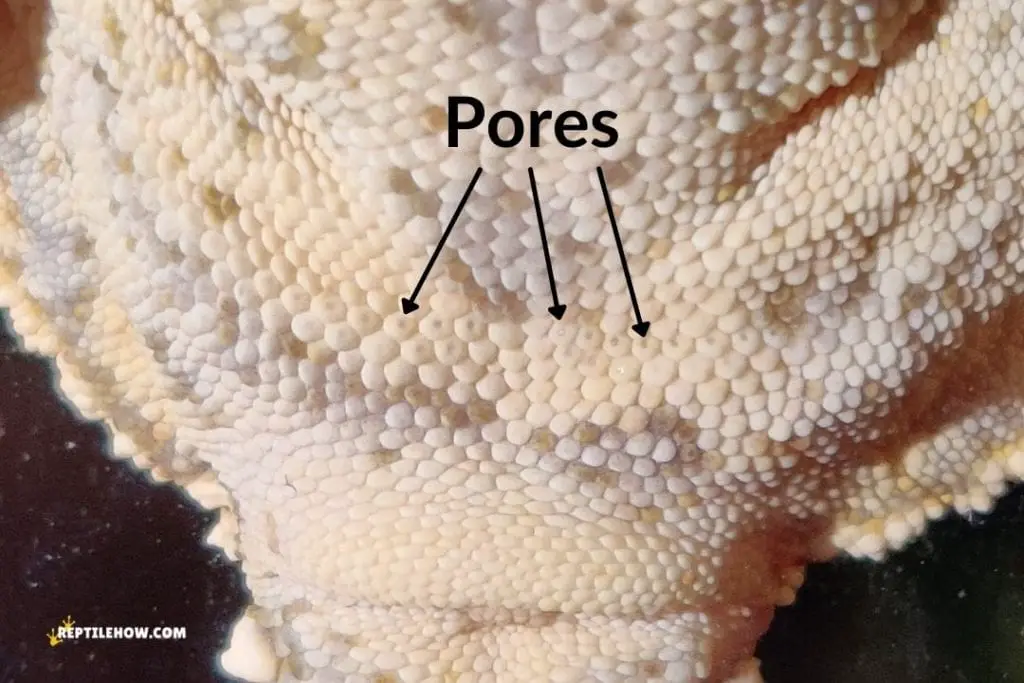
If you want to figure out the sex of your gecko before it reaches maturity, one of the best ways to tell is to use the preanal pore method.
This can be hard to see and you will need a jeweler’s loupe, magnifying glass, or a smartphone with a good zoom and plenty of details.
This can be done starting around 5 grams of weight, but it will be easier if you wait until the gecko reaches about 13 grams.
The first step is to get an assistant. One person should gently restrain the gecko on its back with its legs and tail held out of the way.
Look above and to each side of the cloaca.
A male will have “pores” located in this area. You will see scales above the vent with a spot in the middle. These pores produce the pheromones that geckos use to find mates in the wild.
This is easiest to see on larger geckos and geckos without heavy patterning.
If your crested gecko has a lot of patterning, a female may have dots on the scales in the area or a small divot in the scale that can be mistaken for the pore.
This is easier to tell on larger geckos. If your gecko is under 10 grams, it can be very hard to tell. Most breeders will not guarantee sex in animals under 13 grams. Y
ou can always ask the breeder what they think since they likely have more experience in checking what sex an animal is by the pores.
This is much less accurate than looking for the presence of hemipenes in a sexually-mature adult. The pores are typically on shiny scales, but females can also have shiny scales in this area.
The dot can also look white on light-colored animals. Since there are so many variables, try to treat this as a possible identification until the animal is large enough to finally be able to tell via genital structures.
3. Subtle Differences Between Male and Female Crested Geckos
These next differences are not the easiest ways to tell since some traits are very hard to differentiate.
There are also some myths about how to tell the difference. The spurs on either side of the vent are one of these. While some people claim only males have these, both sexes have them.
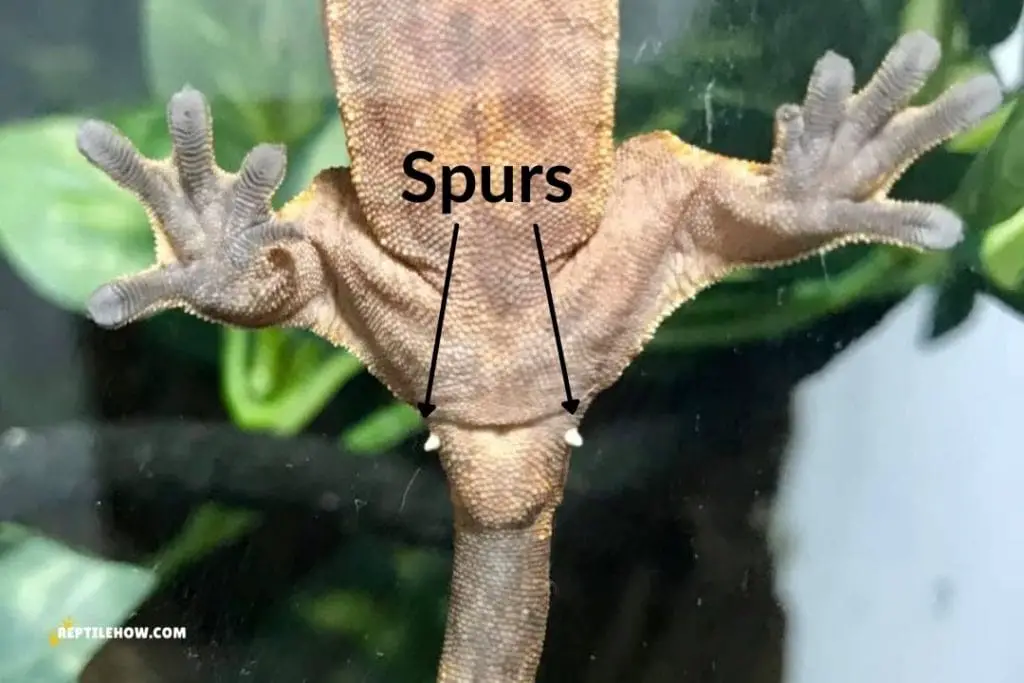
There is very little difference in them between the sexes anyway. Some females can have large spurs and some males have small spurs. Some guides claim males have a “double” spur, but this feature is not easily distinguished and can be wrong.
Some genuine differences are in the skull.
Males will typically have a broader head than a female. They may appear larger than females as well, but this can vary depending on the animal.
Females can weigh more and typically take longer to reach sexual maturity compared to males. Crested geckos have very little variation between the sexes aside from genitals and in breeding groups.
Females also have larger calcium reserves on the roof of the mouth.
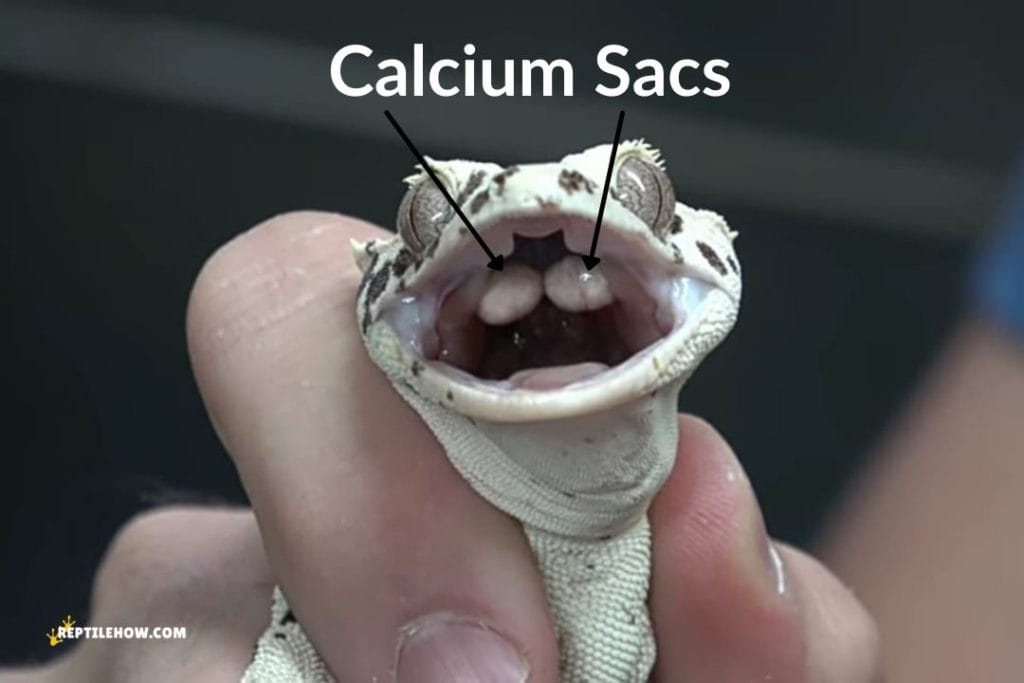
These calcium reserves are used to help form eggshells and are larger in mature females. This may not be the case if your gecko is too young or is suffering from calcium deficiency.
Young females that are still too young to lay an egg will have smaller reserves and an animal that isn’t getting enough calcium will have smaller or non-existent sacs since they may not even have enough to keep growing.
These differences are mostly seen in adult animals, and by that point, you can use the bulge method to tell for certain what you have.
The differences are also really only visible if you compare animals and can vary wildly between individuals. They also depend on the health of the animal.
An animal that didn’t have enough calcium while growing can have changes to the skeleton that make it hard to tell.
You may be wondering if you can use a genetic test to tell, but this wouldn’t quite work with a crested gecko.
Their sex is determined by incubation temperature. More females hatch at lower temperatures while a clutch will produce more males at higher incubation temperatures.
Because of this, it is generally best to wait and find out what sex your gecko is. You may want to wait and buy an adult or subadult if you want a specific sex.
If you open up the mouth of a healthy female that is ready to breed, she will have larger calcium sacs on the roof of her mouth compared to a male.
You can see these on the roof of the mouth close to the throat.
They should be full and white for a breeding female. Females will also lay infertile eggs once they are old enough. If you find any eggs in the enclosure, your gecko is a female.
Crested gecko eggs look like white ovals that are long and relatively narrow. Crested geckos lay no more than 2 eggs at a time.
Step by step sexing guide
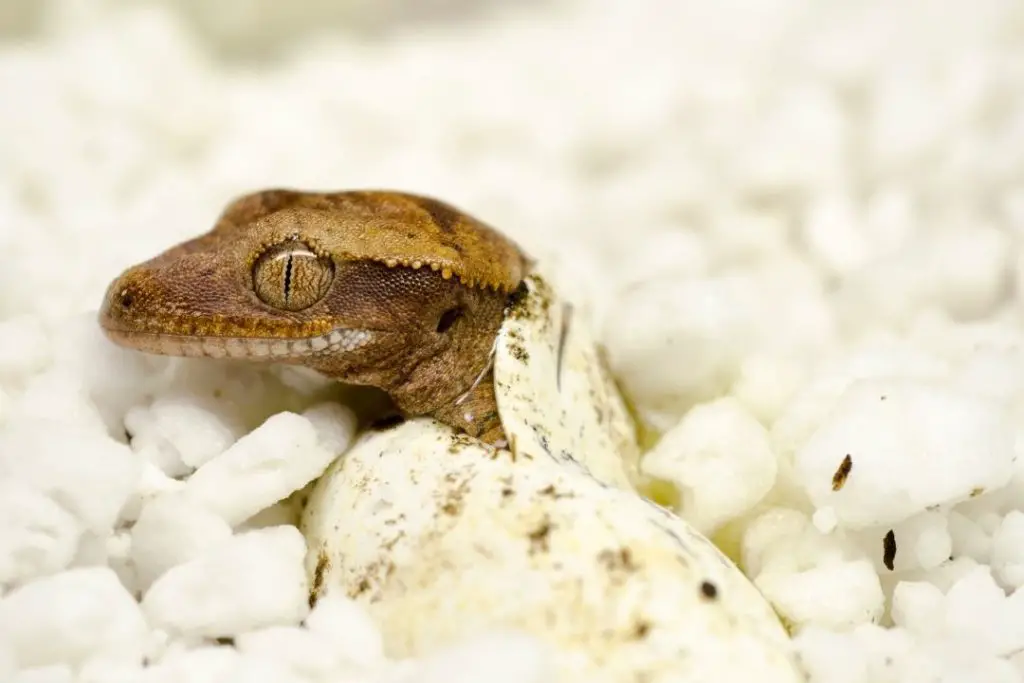
Hatchling geckos do not have a clear tell. Generally, eggs incubated at a lower temperature will have more females than males. Higher temperatures result in smaller geckos and a higher ratio of males.
If you are a breeder and want a specific sex, this can help increase your odds of having the right sex with the genes you want. If you are buying your gecko, you can ask what temperature they incubate their geckos at.
If it is around 70 degrees, you have a slightly higher chance of having a female. Otherwise, you need to wait until your gecko puts on some weight. Hatchling geckos are 1.5-2 grams on average.
If your gecko is under 10 grams, it is best to just ask the breeder. Once your gecko is around this size, you can check your gecko for the preanal pores.
This tends to be at around 6 months of age. Look for a line between the legs of scales with a little dot or divot in the middle of the scales.
Use a jeweler’s loupe or a smartphone with a good camera. If your gecko won’t tolerate being held on its back, put it in a clear container and try to look. If you see the pores, you may have a male.
Treat this as a potential identification. This can be easier to see on larger geckos, but females and animals with heavy patterning can have what seems to be pores in the area.
Once your gecko is over 18 grams, start looking for the development of the bulge below the vent. This is around when your gecko will reach sexual maturity.
If you do not see a bulge develop by 30 grams of weight, you have a female.
Females have a flatter area under the tail. At this point, your gecko is an adult and should be easy to tell apart. You can always ask your vet or a breeder for a second opinion if you are still confused.
Why Sex Your Gecko
While you shouldn’t cohabitate geckos that aren’t adults, you may want to have a small colony of females. Some people love watching a colony of crested geckos.
You should still watch for conflict since even all females can have conflicts. Individual geckos may be bullies or just not tolerate sharing space. Males will fight and severely injure or kill each other.
This means you absolutely must know the sex of all of your geckos before you even think of housing them together.
You may also want to breed your geckos. Obviously you need a male and a female so you are not wasting your time waiting for breeding if it will not happen.
Females also need to be checked for their calcium stores since they can still lay infertile eggs even if they don’t mate. Males are well-known for fighting and you may end up with a dead gecko.
They can start fighting at just a few months of age. Crested geckos can be housed in groups of up to 4 females and 1 male, but at that point, he might not be able to breed all the females.
More geckos also might make it harder for each animal to get enough food and resources. You also need at least 10 more gallons of space per gecko and much more cover to help reduce conflict.
Finally, you need to know which animals in a breeding group are which sex. The male and female need to be separated during the cool season to let the female regain her calcium stores. This helps replicate their wild breeding behavior.
Conclusion
It will always be easiest to tell once your crested gecko is sexually mature.
Since the male has an obvious bulge on the tail, it is easy to identify your male gecko from a glance. If you have any questions or comments, please leave them below.
